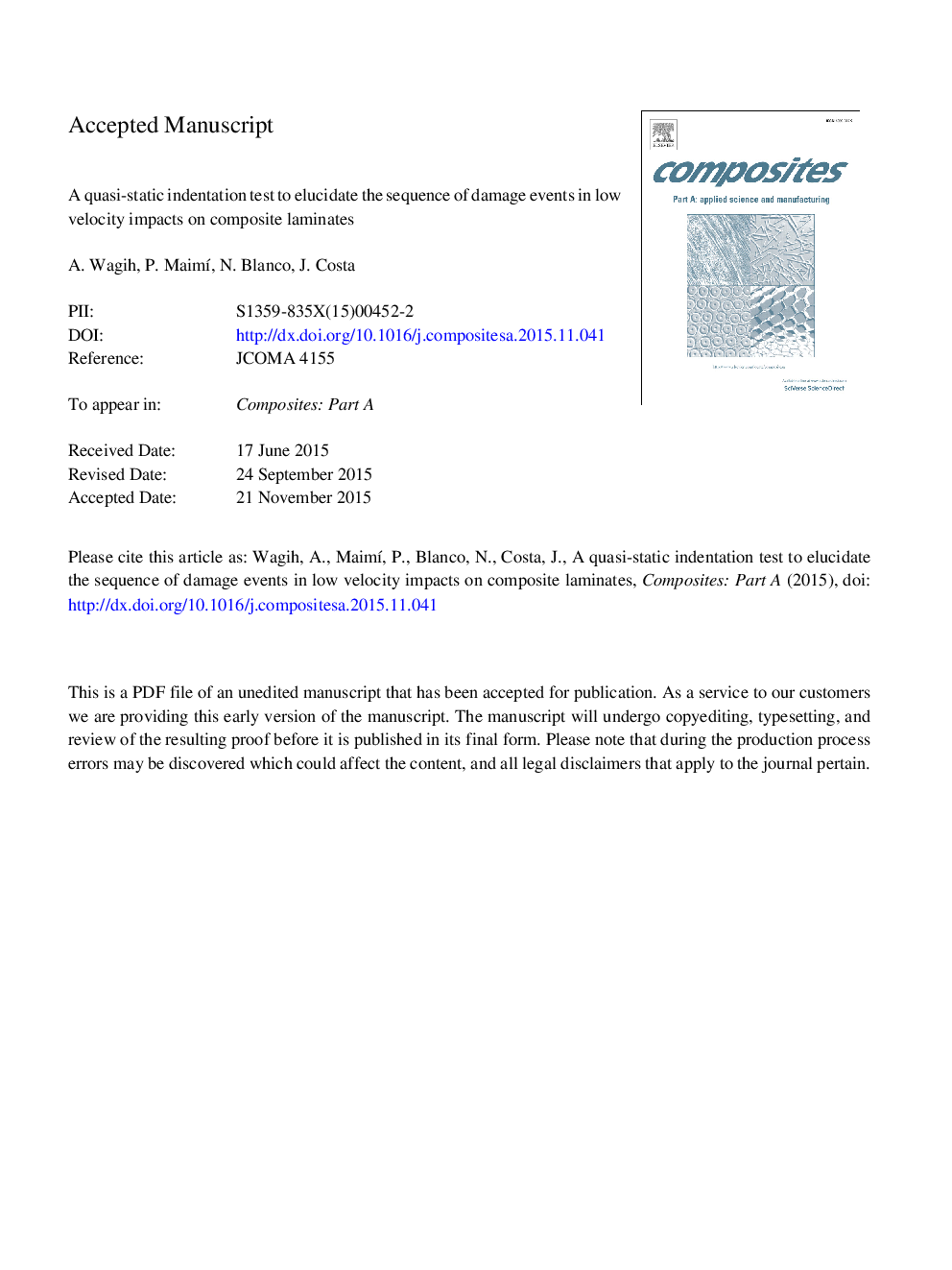| Article ID | Journal | Published Year | Pages | File Type |
|---|---|---|---|---|
| 7891259 | Composites Part A: Applied Science and Manufacturing | 2016 | 26 Pages |
Abstract
Any attempt to achieve composite laminates with improved damage tolerance to low velocity impacts must depart from the understanding of the sequence of damage mechanisms taking place. To this purpose, a series of quasi-static indentation experiments was conducted on AS4D/TC350 carbon/epoxy specimens. The induced damage at different indenter displacements was characterized using electron microscopy and C-scan, while the residual indentation profiles were captured with a 3D surface roughness machine. The indentation depth was shown to have relaxed after the test, reaching a steady value after 14Â days. For the conditions explored, the relaxation was not dependent on the damage extent. The results showed that matrix cracking is in fact the crucial damage mechanism as it is responsible for the first sudden loss of load capacity and triggers the progressive growth of delaminations.
Keywords
Related Topics
Physical Sciences and Engineering
Materials Science
Ceramics and Composites
Authors
A. Wagih, P. MaimÃ, N. Blanco, J. Costa,
